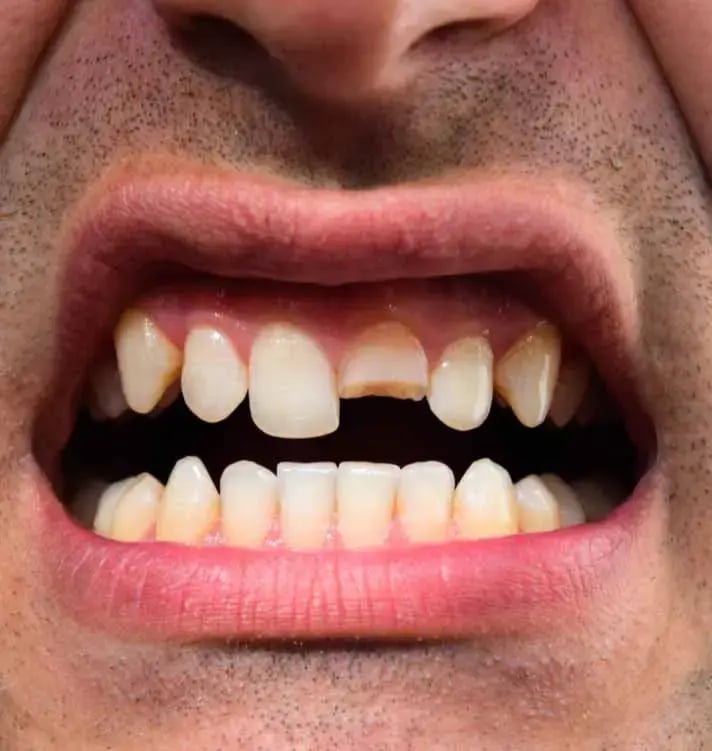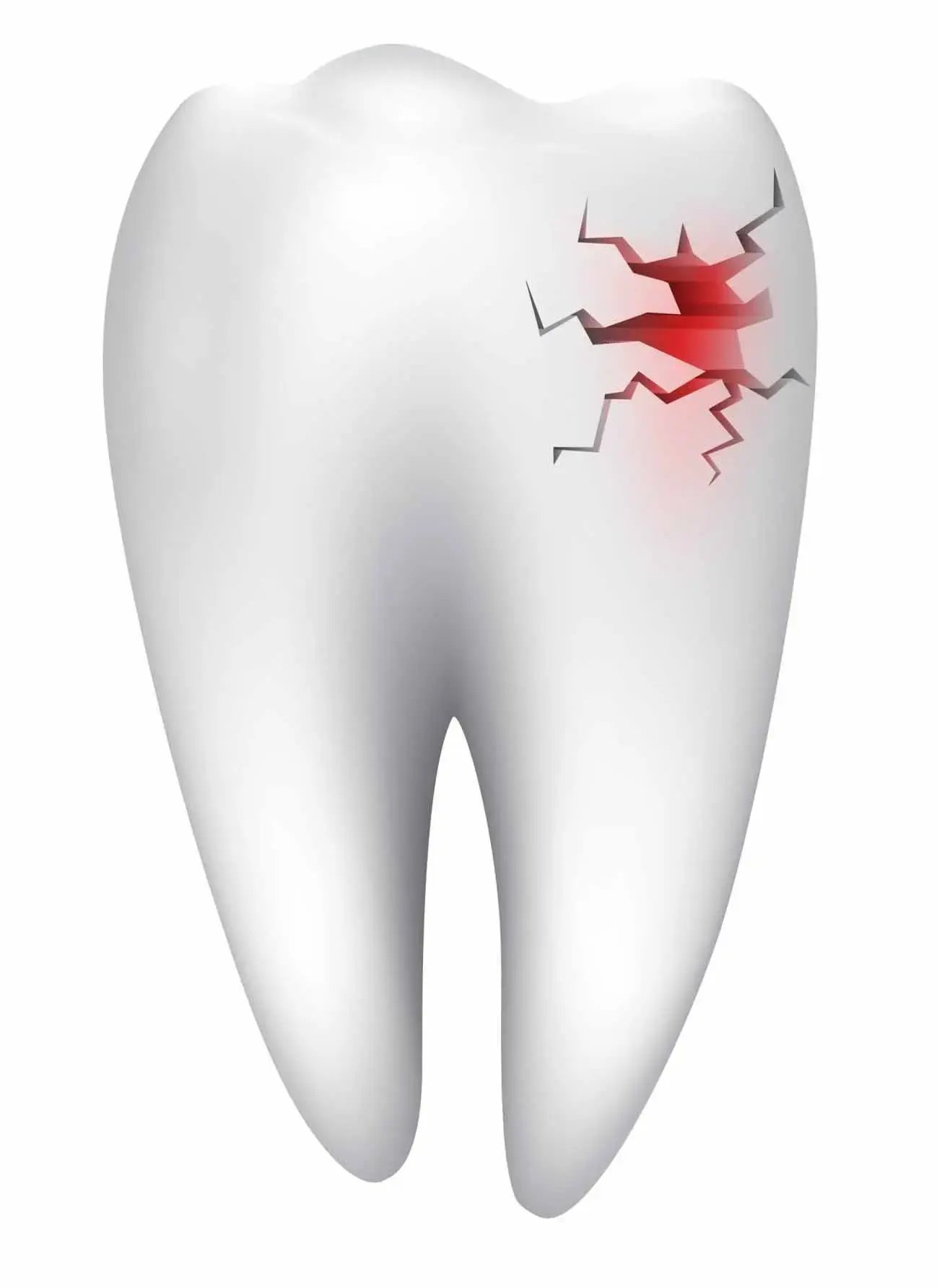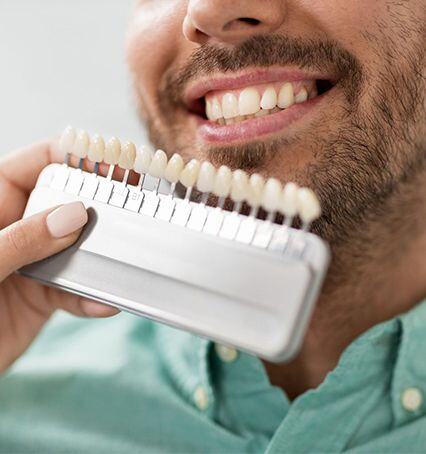What is a Fractured Tooth?
Understanding the Causes of Tooth Fractures
A fractured tooth, also known as a broken tooth, refers to a condition where a tooth has experienced a crack, chip, or break in its structure. This can occur due to various reasons, such as trauma, biting on hard objects, dental decay, weakened tooth structure, or old dental restorations that have failed. A fractured tooth can range from a minor cosmetic issue to a severe dental emergency, depending on the extent of the damage.
There are different types of tooth fractures, including:
1. Craze lines: These are tiny cracks on the outermost layer of the tooth enamel, often caused by normal wear and tear or biting into hard substances. Craze lines typically don't cause pain and are considered cosmetic in nature.
2. Fractured cusp: This occurs when a portion of the tooth's chewing surface breaks off. It usually happens with large fillings or weakened teeth and may not cause immediate pain.
3. Cracked tooth: This refers to a crack that extends from the chewing surface of the tooth towards the root. It can cause pain upon chewing or sensitivity to temperature changes. If left untreated, a cracked tooth may progress and lead to more severe symptoms.
4. Split tooth: A split tooth occurs when a cracked tooth progresses to the point where it is split into separate segments. It usually causes significant pain and can't be saved intact. Depending on the situation, the tooth may require extraction or treatment with a dental specialist.
5. Vertical root fracture: This type of fracture begins at the root of the tooth and extends upward towards the chewing surface. It can cause varying symptoms, such as pain when chewing, sensitivity to pressure or temperature, and gum swelling. Vertical root fractures often require extraction of the affected tooth.
It's important to seek dental attention if you suspect a fractured tooth. A dentist will evaluate the extent of the fracture, provide appropriate treatment options, and relieve any associated pain or discomfort. Treatment may involve dental bonding, dental crowns, root canal therapy, or extraction, depending on the severity of the fracture and the condition of the tooth.
Our mission is to create a world where every investment in modern beauty is Worth It.
Let's keep in touch
Get updates of the treatments you are interested
What Causes Cracked Teeth?
Cracked teeth can occur due to various reasons. Here are some common causes:
1. Tooth Trauma: A direct impact to the mouth or jaw, such as a sports injury, fall, or accident, can cause a tooth to crack.
2. Biting or Chewing Hard Objects: Regularly biting or chewing on hard substances like ice, hard candies, or pens can put excessive pressure on the teeth and potentially lead to cracks.
3. Teeth Grinding (Bruxism): Persistent grinding or clenching of teeth, often during sleep, can weaken the tooth structure and make them more susceptible to cracking.
4. Age and Wear: Teeth naturally weaken over time with age and use. Gradual wear and tear can make them more prone to cracking, especially if there are existing dental fillings or restorations.
5. Dental Fillings: Large or old fillings may weaken the surrounding tooth structure, making it more vulnerable to cracks.
6. Temperature Changes: Rapid and frequent changes in temperature, such as consuming very hot or cold food or beverages, can cause the tooth enamel to expand or contract, potentially leading to cracks.
7. Weakened Teeth: Teeth that have undergone root canal treatment or extensive dental procedures may become more brittle and prone to cracking.
It's essential to note that the severity of the crack can vary from superficial lines on the enamel to deep fractures that extend into the tooth's root. If you suspect a cracked tooth, it is crucial to seek dental evaluation and treatment promptly to prevent further damage and potential complications.

Which Teeth are Most Likely to Crack?
Several factors can contribute to tooth cracking, including trauma, decay, biting on hard objects, or dental conditions like bruxism (teeth grinding). While any tooth can potentially crack, certain teeth are more prone to cracking due to their location and function. The most common teeth to crack are:
1. Molars: The molars, especially the back molars (third molars or "wisdom teeth"), are frequently subjected to the most force during chewing. Their location makes them vulnerable to cracks, particularly if there is decay or weakened enamel.
2. Premolars: The premolars, also known as bicuspids, are located between the canines and molars. They are involved in chewing and grinding food, which can increase the risk of cracks, especially if they are heavily restored with fillings.
3. Canines: Canine teeth have longer roots and are designed to withstand biting forces. However, they can still crack, especially if subjected to trauma or if there are underlying dental issues.
4. Incisors: Incisors are the front teeth, responsible for biting into food. While they are less likely to crack compared to molars or premolars, they can still be vulnerable, particularly if there is an underlying weakness or injury.
It's important to note that individual variations and oral health conditions can affect the likelihood of tooth cracking. Maintaining good oral hygiene, avoiding chewing on hard objects, and promptly addressing any dental issues can help reduce the risk of tooth cracks. Regular dental check-ups are crucial for identifying and addressing potential vulnerabilities in your teeth.
Our mission is to create a world where every investment in modern beauty is Worth It.
Let's keep in touch
Get updates of the treatments you are interested
What are the Symptoms of Cracked Teeth Syndrome?
1. Tooth pain: Cracked teeth often cause intermittent or persistent tooth pain that can be triggered by chewing, biting, or releasing biting pressure.
2. Sensitivity to temperature changes: You may experience sensitivity to hot or cold foods and beverages, particularly when they come into contact with the affected tooth.
3. Pain during chewing: Cracked teeth can cause discomfort or sharp pain while chewing, especially when biting down on certain foods or applying pressure to the tooth.
4. Swelling of the gums: In some cases, the gums around the cracked tooth may become swollen or tender.
5. Tooth mobility: The tooth may feel loose or slightly movable due to the crack affecting its stability.
6. Painful response to certain stimuli: You might feel pain when the cracked tooth is exposed to specific stimuli, such as sweet foods, acidic substances, or even when the air hits the tooth.

Understanding the Causes of Tooth Fractures
A fractured tooth, also known as a broken tooth, refers to a condition where a tooth has experienced a crack, chip, or break in its structure. This can occur due to various reasons, such as trauma, biting on hard objects, dental decay, weakened tooth structure, or old dental restorations that have failed. A fractured tooth can range from a minor cosmetic issue to a severe dental emergency, depending on the extent of the damage.
There are different types of tooth fractures, including:
1. Craze lines: These are tiny cracks on the outermost layer of the tooth enamel, often caused by normal wear and tear or biting into hard substances. Craze lines typically don't cause pain and are considered cosmetic in nature.
2. Fractured cusp: This occurs when a portion of the tooth's chewing surface breaks off. It usually happens with large fillings or weakened teeth and may not cause immediate pain.
3. Cracked tooth: This refers to a crack that extends from the chewing surface of the tooth towards the root. It can cause pain upon chewing or sensitivity to temperature changes. If left untreated, a cracked tooth may progress and lead to more severe symptoms.
4. Split tooth: A split tooth occurs when a cracked tooth progresses to the point where it is split into separate segments. It usually causes significant pain and can't be saved intact. Depending on the situation, the tooth may require extraction or treatment with a dental specialist.
5. Vertical root fracture: This type of fracture begins at the root of the tooth and extends upward towards the chewing surface. It can cause varying symptoms, such as pain when chewing, sensitivity to pressure or temperature, and gum swelling. Vertical root fractures often require extraction of the affected tooth.
It's important to seek dental attention if you suspect a fractured tooth. A dentist will evaluate the extent of the fracture, provide appropriate treatment options, and relieve any associated pain or discomfort. Treatment may involve dental bonding, dental crowns, root canal therapy, or extraction, depending on the severity of the fracture and the condition of the tooth.
Our mission is to create a world where every investment in modern beauty is Worth It.
Let's keep in touch
Get updates of the treatments you are interested
What Causes Cracked Teeth?
Cracked teeth can occur due to various reasons. Here are some common causes:
1. Tooth Trauma: A direct impact to the mouth or jaw, such as a sports injury, fall, or accident, can cause a tooth to crack.
2. Biting or Chewing Hard Objects: Regularly biting or chewing on hard substances like ice, hard candies, or pens can put excessive pressure on the teeth and potentially lead to cracks.
3. Teeth Grinding (Bruxism): Persistent grinding or clenching of teeth, often during sleep, can weaken the tooth structure and make them more susceptible to cracking.
4. Age and Wear: Teeth naturally weaken over time with age and use. Gradual wear and tear can make them more prone to cracking, especially if there are existing dental fillings or restorations.
5. Dental Fillings: Large or old fillings may weaken the surrounding tooth structure, making it more vulnerable to cracks.
6. Temperature Changes: Rapid and frequent changes in temperature, such as consuming very hot or cold food or beverages, can cause the tooth enamel to expand or contract, potentially leading to cracks.
7. Weakened Teeth: Teeth that have undergone root canal treatment or extensive dental procedures may become more brittle and prone to cracking.
It's essential to note that the severity of the crack can vary from superficial lines on the enamel to deep fractures that extend into the tooth's root. If you suspect a cracked tooth, it is crucial to seek dental evaluation and treatment promptly to prevent further damage and potential complications.

Which Teeth are Most Likely to Crack?
Several factors can contribute to tooth cracking, including trauma, decay, biting on hard objects, or dental conditions like bruxism (teeth grinding). While any tooth can potentially crack, certain teeth are more prone to cracking due to their location and function. The most common teeth to crack are:
1. Molars: The molars, especially the back molars (third molars or "wisdom teeth"), are frequently subjected to the most force during chewing. Their location makes them vulnerable to cracks, particularly if there is decay or weakened enamel.
2. Premolars: The premolars, also known as bicuspids, are located between the canines and molars. They are involved in chewing and grinding food, which can increase the risk of cracks, especially if they are heavily restored with fillings.
3. Canines: Canine teeth have longer roots and are designed to withstand biting forces. However, they can still crack, especially if subjected to trauma or if there are underlying dental issues.
4. Incisors: Incisors are the front teeth, responsible for biting into food. While they are less likely to crack compared to molars or premolars, they can still be vulnerable, particularly if there is an underlying weakness or injury.
It's important to note that individual variations and oral health conditions can affect the likelihood of tooth cracking. Maintaining good oral hygiene, avoiding chewing on hard objects, and promptly addressing any dental issues can help reduce the risk of tooth cracks. Regular dental check-ups are crucial for identifying and addressing potential vulnerabilities in your teeth.
Our mission is to create a world where every investment in modern beauty is Worth It.
Let's keep in touch
Get updates of the treatments you are interested
What are the Symptoms of Cracked Teeth Syndrome?
1. Tooth pain: Cracked teeth often cause intermittent or persistent tooth pain that can be triggered by chewing, biting, or releasing biting pressure.
2. Sensitivity to temperature changes: You may experience sensitivity to hot or cold foods and beverages, particularly when they come into contact with the affected tooth.
3. Pain during chewing: Cracked teeth can cause discomfort or sharp pain while chewing, especially when biting down on certain foods or applying pressure to the tooth.
4. Swelling of the gums: In some cases, the gums around the cracked tooth may become swollen or tender.
5. Tooth mobility: The tooth may feel loose or slightly movable due to the crack affecting its stability.
6. Painful response to certain stimuli: You might feel pain when the cracked tooth is exposed to specific stimuli, such as sweet foods, acidic substances, or even when the air hits the tooth.







